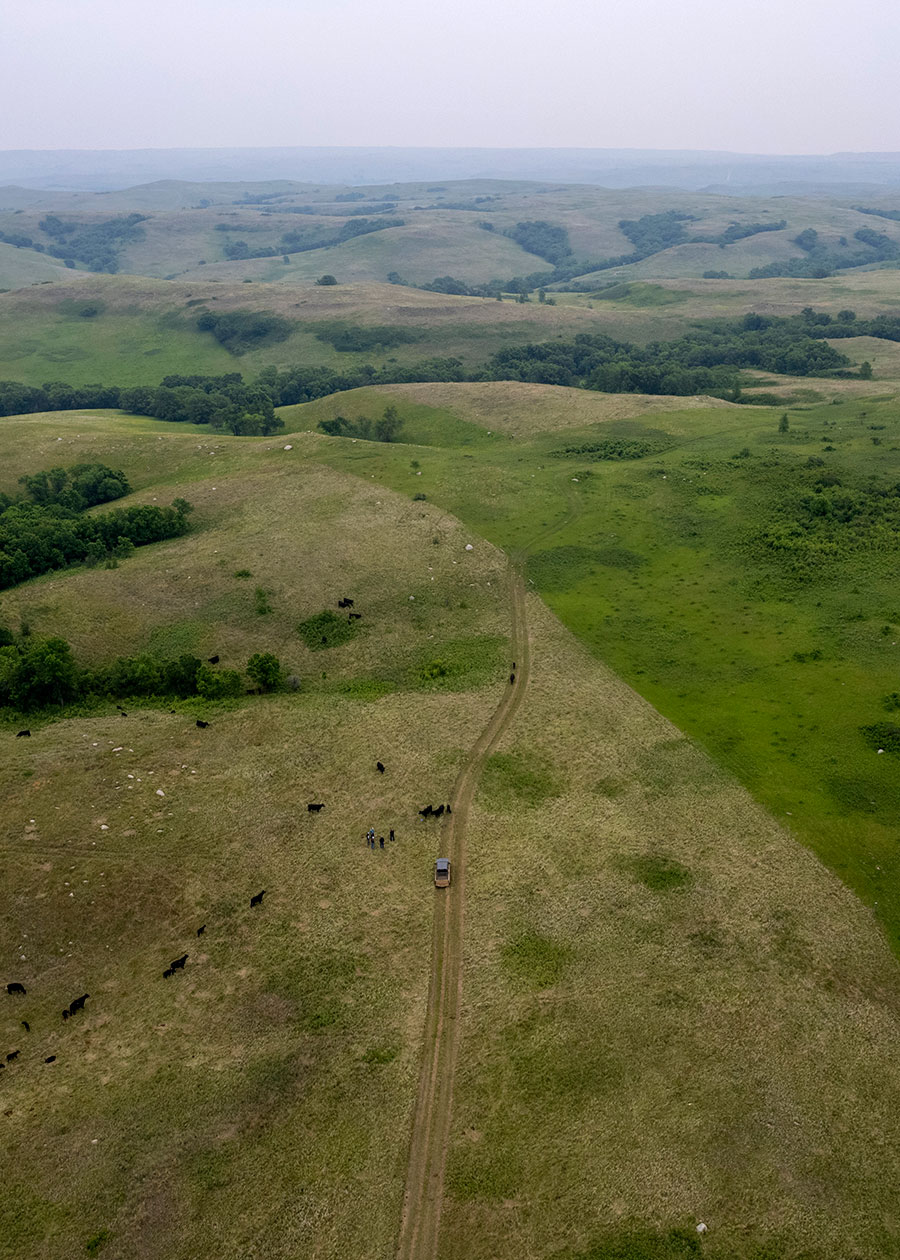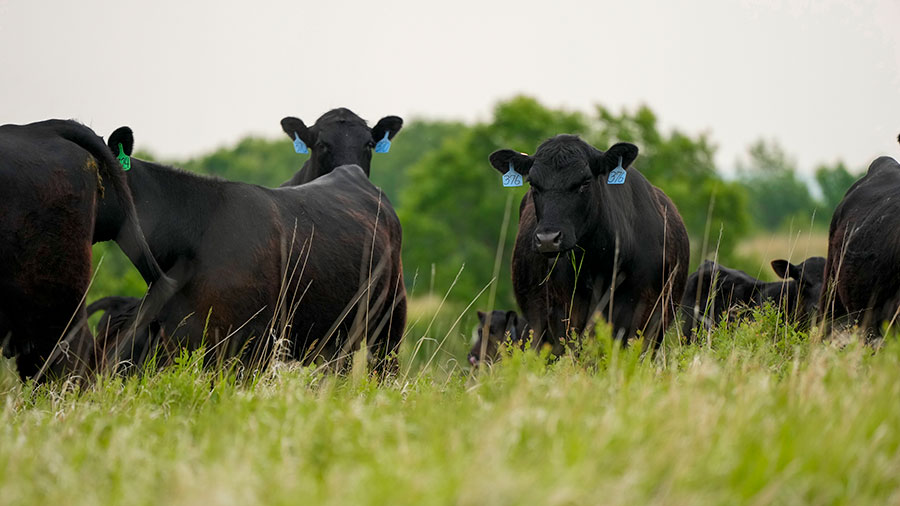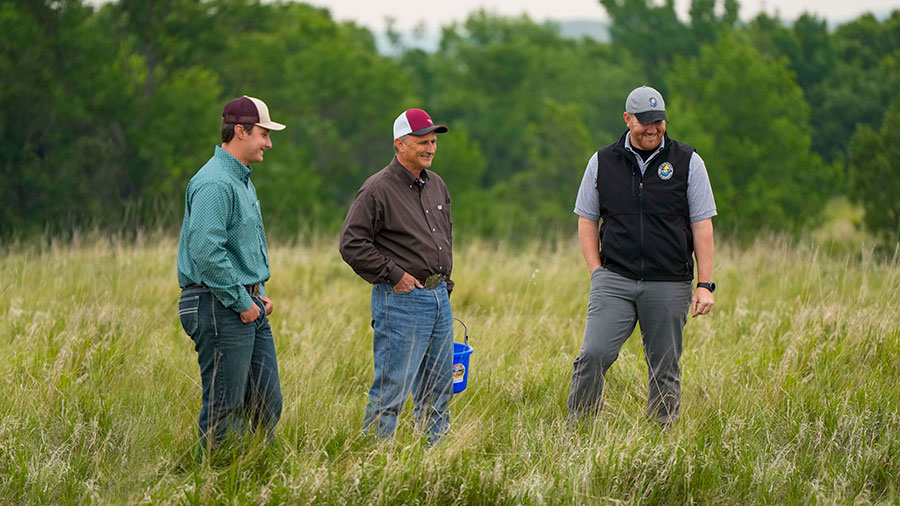Rejuvenating Native Prairie
Ron Wilson

Morton County Wildlife Management Area has been around.
The 640-acre WMA was purchased in 1917, making it the second oldest WMA managed or owned by the North Dakota Game and Fish Department behind Wakopa WMA in the Turtle Mountains.
For the last decade or so, the Department and an area rancher have been employing the age-old approach (envision free-roaming bison back in the day) of using cattle to invigorate the WMA’s native prairie.
“Morton County WMA is pretty much all native prairie, except for about 50 acres in the southwest corner. Our goal is to have the cattle chew down the old grass and break up the duff layer. We try to get them in here early and moved through the different cells so the grass can recover,” said Levi Jacobson, Department wildlife resource management supervisor in Bismarck. “Getting the cows out here early is important so they target the cool season, invasive species such as smooth brome and Kentucky bluegrass. The cattle will get rotated through the cells according to the grazing plan. And then when we come back and do this again in two years, we’ll rotate the cows through the cells in opposite order. The grazing regiment helps to provide diversity on the landscape.”
Scott Ressler, the area rancher who runs cattle from the family’s operation at Morton County WMA, said the positive influence the cows have on the landscape doesn’t simply boil down to how and what the animals eat.
“That hoof action just rejuvenates the old, dead mats of grass,” he said. “The native range is a tough, tough critter but you have to be able to utilize it and graze it.”

According to Ressler’s research, he said when the WMA’s gate opened nearly a decade ago to his family’s operation, it likely marked the first time cattle were released on the landscape for more than a century.
“When we first started, it really wasn’t the best type of grass … there was lots of thick, thick litter that had really integrated and just choked out the native ranges, and we’re slowly starting to bring it back into good shape,” said Ressler, environmental services director for the North Dakota Stockmen’s Association. “I remember as a kid that this was a popular area to come sit in the blinds and watch sharp-tailed grouse dance. And that was essentially eliminated because the birds just weren’t here anymore. And now they’re back dancing in those same areas. We’re also starting to see some Hungarian partridge.”
The cows, and the rotational grazing system being used, have made a noticeable difference on this WMA located 11 miles south of Mandan. The return of sharp-tailed grouse is proof of that.
“Without the cattle, I think our diversity would be lost, and Scott can vouch for that,” Jacobson said. “The grass, the diversity has come a long way in just the 10 years that we’ve been doing this.”
There was a time when hunters didn’t embrace the idea of running cattle on land where they wanted to hunt because they thought the big, domestic critters did more harm than good. Yet, as Jacobson and Ressler pointed out, scientific research on the issue has proven otherwise.
“We proved that theory isn’t true anymore. Ducks Unlimited, Pheasants Forever, Game and Fish, all these wildlife groups have changed the mindset that integrating livestock from the beef cattle industry has been a great thing,” Ressler said. “I think once hunters and the other people who use the area saw the work that was done out here in rejuvenating this native range has been nothing but positive because the wildlife has come back.”

